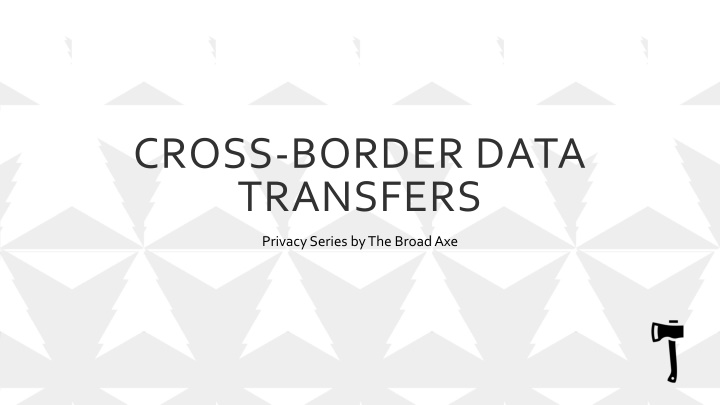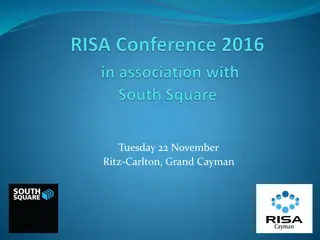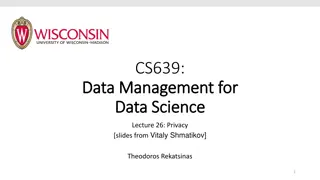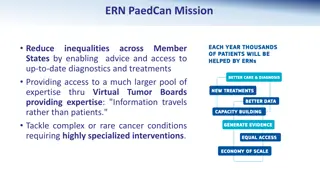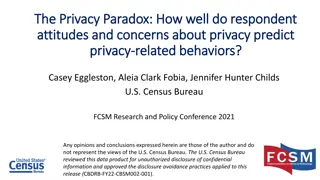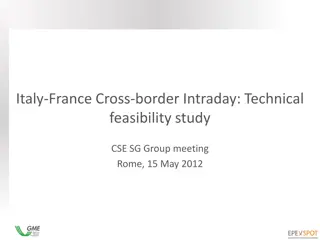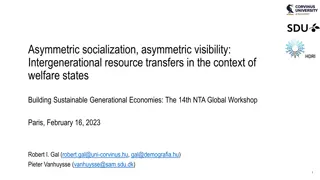Challenges and Solutions in Cross-Border Data Transfers: A Privacy Perspective
Pressure on legal teams to expedite contract reviews for expanding sales has been impeded by Data Processing Agreements and Standard Contractual Clauses, especially in dealings with European customers. Examples of challenging demands from customers are highlighted. The evolution of cross-border data transfer regulations, particularly the impact of the Schrems II ruling, is discussed. The need to revisit approaches to Data Processing Agreements is emphasized, focusing on compliance rather than risk-shifting provisions.
Download Presentation

Please find below an Image/Link to download the presentation.
The content on the website is provided AS IS for your information and personal use only. It may not be sold, licensed, or shared on other websites without obtaining consent from the author.If you encounter any issues during the download, it is possible that the publisher has removed the file from their server.
You are allowed to download the files provided on this website for personal or commercial use, subject to the condition that they are used lawfully. All files are the property of their respective owners.
The content on the website is provided AS IS for your information and personal use only. It may not be sold, licensed, or shared on other websites without obtaining consent from the author.
E N D
Presentation Transcript
CROSS-BORDER DATA TRANSFERS Privacy Series by The Broad Axe
OUTLINE The Problem HowDidWeGet Here HowDoWeSolveThis Problem
THE PROBLEM There s always been pressure on the legal team to turn contracts quickly so that the company can expand sales and grow. Data Processing Agreements and Standard Contractual Clauses have slowed down the contract review cycle. Especially when negotiating with European customers.
EXAMPLES Customers who demand Transfer Impact Assessments as a part of the standard contractual clauses. Customers who over burden the DPA with liability and indemnity clauses. Customers who hide liability clauses in data breach response clauses. Customers who hide IP licensing clauses in the DPA. Customers who demand copies of your DPAs with sub- processors. Customers that want a list of every one of your sub- processors.
HOW DID WE GET HERE? Safe Harbor Snowden Leak Schrems I Privacy Shield Schrems II EDPB guidance for cross-border transfers
THE PROBLEM REVISITED Schrems II In this case, the Court of Justice for the European Union ( ECJ ) ruled that cross-border data transfers to the US do not meet the GDPR s privacy requirements. The ECJ was particularly redressability, privacy safeguard, and equivalence between US and EU law. Problematically, the ECJ s analysis is based on the state of US law in the early 2010s, before significant changes to US law in 2017 and 2018. concerned about issues of
THE PROBLEM REVISITED The ECJ s ruling in Schrems II increased skepticism of US data processing agreements. European conclusions that data shouldn t transfer to the US. law firms and companies have rushed to That skepticism has fueled the issues raised earlier in the presentation.
HOW DO WE SOLVE THIS PROBLEM Back to basics: The DPA (and the attached SCCs and TIAs) are not a risk shifting document. The DPA should be a compliance exercise where parties check boxes on their compliance obligations. Remove all clauses about liability and indemnity and discuss those issues in the MSA. Paying for data breach response and management should be based on comparative fault. company is always at fault. DPAs are not the place for IP discussions. Not on the assumption one
HOW DO WE SOLVE THIS PROBLEM Back to basics: Customers shouldn t ask for contracts from your sub-processors: they aren t a party to those contracts. Customers also shouldn t ask to be signatories to your contracts with sub-processors because they don t have contractual privity with your sub-processors.
HOW DO WE SOLVE THIS PROBLEM For TIAs: We don t want to turn this conversation into an in-depth dive on international surveillance law, but you will need a Transfer Impact Assessment that explains why US doesn t violate GDPR privacy principles. The Congressional Research Service has done this analysis for you. You can https://crsreports.congress.gov/product/pdf/R/R46724 find that report here:
THANK YOU If youhave anyquestion,you can contact: Lana Xaochay lana.Xaochay@ivanti.com Tsutomu Johnson tomu@thebroadaxe.us
DISCLAIMER The slides contained herein and the content they contain are for informational purposes only and not for the purpose of providing legal advice. You should not rely on the information contained herein without seeking the advice of an attorney. Reviewing or receiving these slides does not create an attorney client relationship between you and The Broad Axe. For any particular legal issue or problem, you should contact an attorney directly to obtain legal advice.
